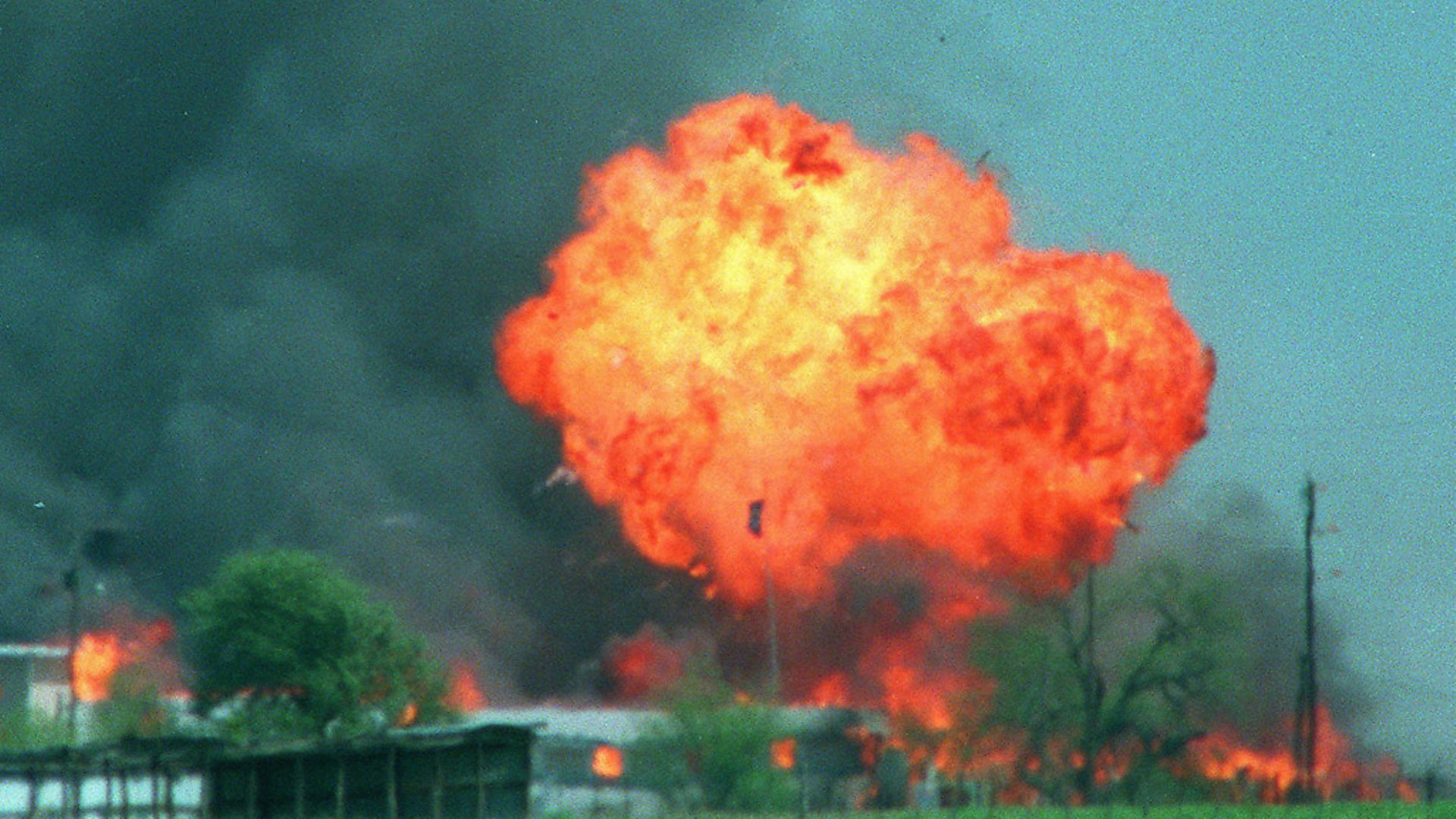
Twenty-five years on from the tragic siege, ANDREW CROME shows how our understanding of the events has shifted.
Twenty five years ago this month saw the tragic end of a 51-day confrontation between the FBI and the Branch Davidians. The trouble had started on February 28, 1993, when agents from the Bureau of Alcohol, Tobacco and Firearms (ATF) attempted to storm the Davidians’ ‘Mount Carmel’ compound, just outside Waco, Texas, in search of illegal weapons.
An ensuing firefight saw six ATF agents and five Davidians shot dead and led to the stand-off which only finished when the authorities’ patience finally ran out. CS gas was fired into the compound in an attempt to flush out group members. Instead, the compound was engulfed in flames. At least 76 group members, including 24 children, lost their lives. The heat was so intense that bodies melted together.
Controversy still rages over whether the Davidians started the fire to commit mass suicide, or if the FBI’s assault started the inferno, and the siege has become a defining moment in recent American history, one which highlights and exacerbates the country’s fault lines.
Much discussion of the siege has focused on the failure of the FBI to take the Davidians’ religious positions seriously. The group held to a complex theology, in which the prophecies of Revelation played a key role. Their leader, David Koresh, viewed himself as the Lamb of God, predicted to open the seven seals that would lead to God’s judgement. The group believed they were fated to be involved in an apocalyptic confrontation with ‘Babylon’ – a term Koresh applied to the US authorities. By assaulting the group directly, the government confirmed their prophecies and reinforced their beliefs.
Government narrative in the aftermath of the siege placed the blame squarely at Koresh’s feet. Authorities portrayed him as a dangerous, and probably insane, individual who had perpetrated an act of mass suicide. President Bill Clinton reacted to criticism of the government’s handling of the siege by expressing incredulity that ‘anyone… would suggest that the Attorney General should resign because some religious fanatics murdered themselves’. The official report in 2000, by former senator John Danforth, supported this view, concluding that Koresh and ‘certain Branch Davidians’ set fire to their own compound. These findings were supported by academic work on Branch Davidian theology and its potential to justify martyrdom in fire. Recordings from the compound, featuring discussion of spreading fuel, appear to back this up.
But other research has questioned these claims. The recordings are open to debate, and Davidian survivors have often stated that Koresh preached against suicide. Some have suggested the FBI’s assault accidentally started the blaze. Scepticism over the official narrative was shared by the public, with a 1999 CBS poll suggesting 62% believed that the government had covered up its failings at Waco.
For many on the right, the siege became a symbol of government attacks on religious and civil liberties. On the second anniversary of the fire, Timothy McVeigh planted a bomb at the Federal Building in Oklahoma City, killing 168 people in revenge for the government’s actions. Today Waco remains a potent symbol that continues to motivate many within the survivalist and militia movements in the US.
The events were quickly politicised in popular media. Within months, NBC’s In The Line of Duty: Ambush At Waco portrayed heroic ATF agents and a diabolic, controlling Koresh. Images of ‘brainwashed’ cultists at Waco, merging with cultural memories of the Jonestown massacre, and later, the 1997 Heaven’s Gate suicides, permeated popular dramas’ presentation of new religious movements.
However a more nuanced narrative developed in line with public scepticism. Shows such as South Park, for example, satirised disproportionate ATF militarism. Michael McNulty’s documentaries, including the Oscar nominated Waco: Rules of Engagement, have also done much to question the government narrative.
Most recently, Paramount’s Waco offered a direct dramatisation. Based on books by FBI negotiator Gary Noesner and siege survivor David Thibodeau, the series was criticised by some for an overly sympathetic portrayal of Koresh. As Noesner concluded, the siege was ‘a very complex situation where both good and bad decisions were made on both sides that led to a very tragic conclusion’.
Some positive outcomes did follow. In the aftermath, the FBI modified its approach to religious groups. This helped them reach a peaceful solution to the standoff with the Montana Freemen in 1996. The Davidians also survived and developed. Today, a new Branch Davidian church sits on the site of Mount Carmel, serving as both a memorial and as a testimony to the resilience of their religious belief.
Andrew Crome is a lecturer in history at Manchester Metropolitan University; this article also appears at www.theconversation.com









